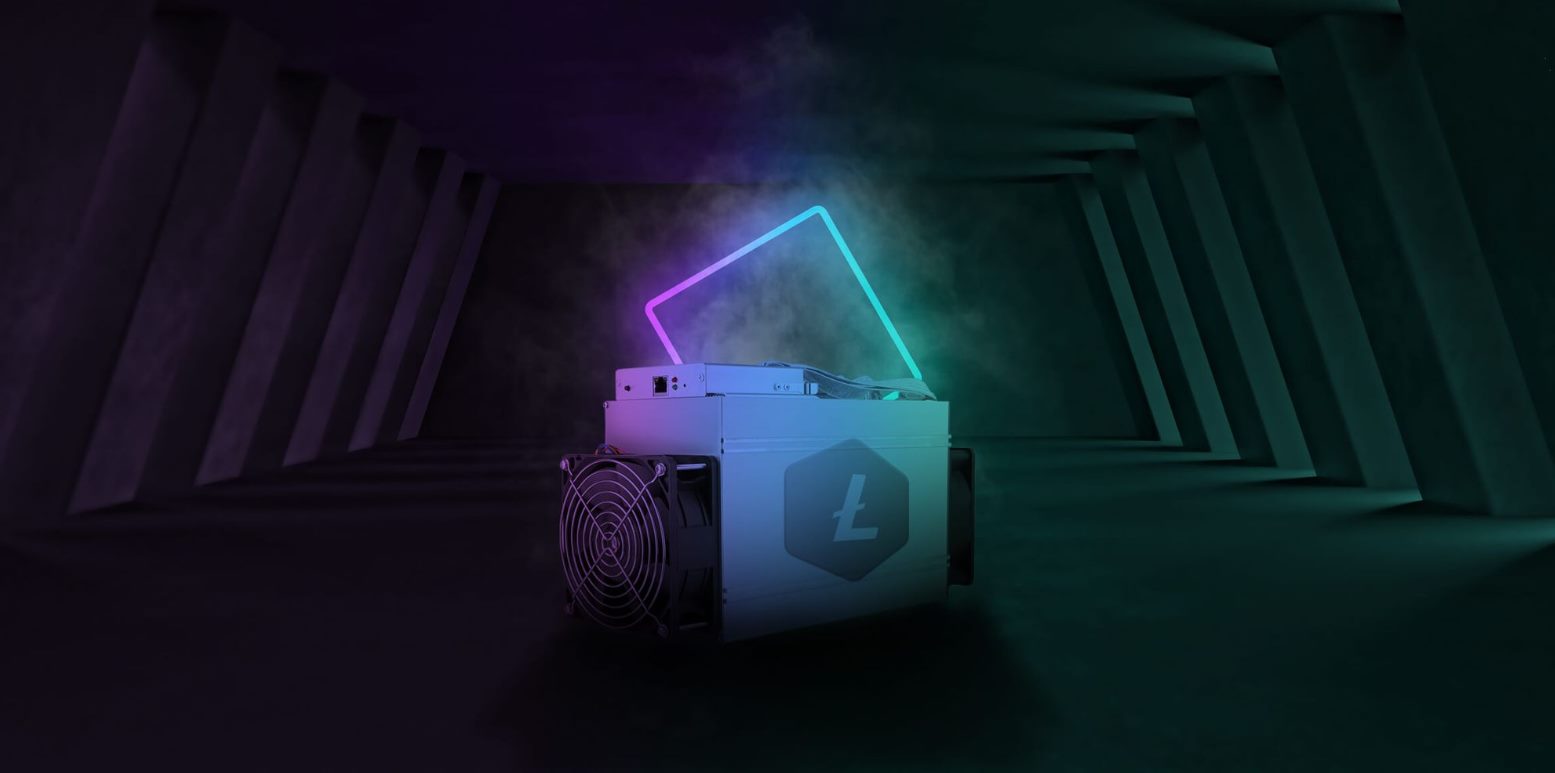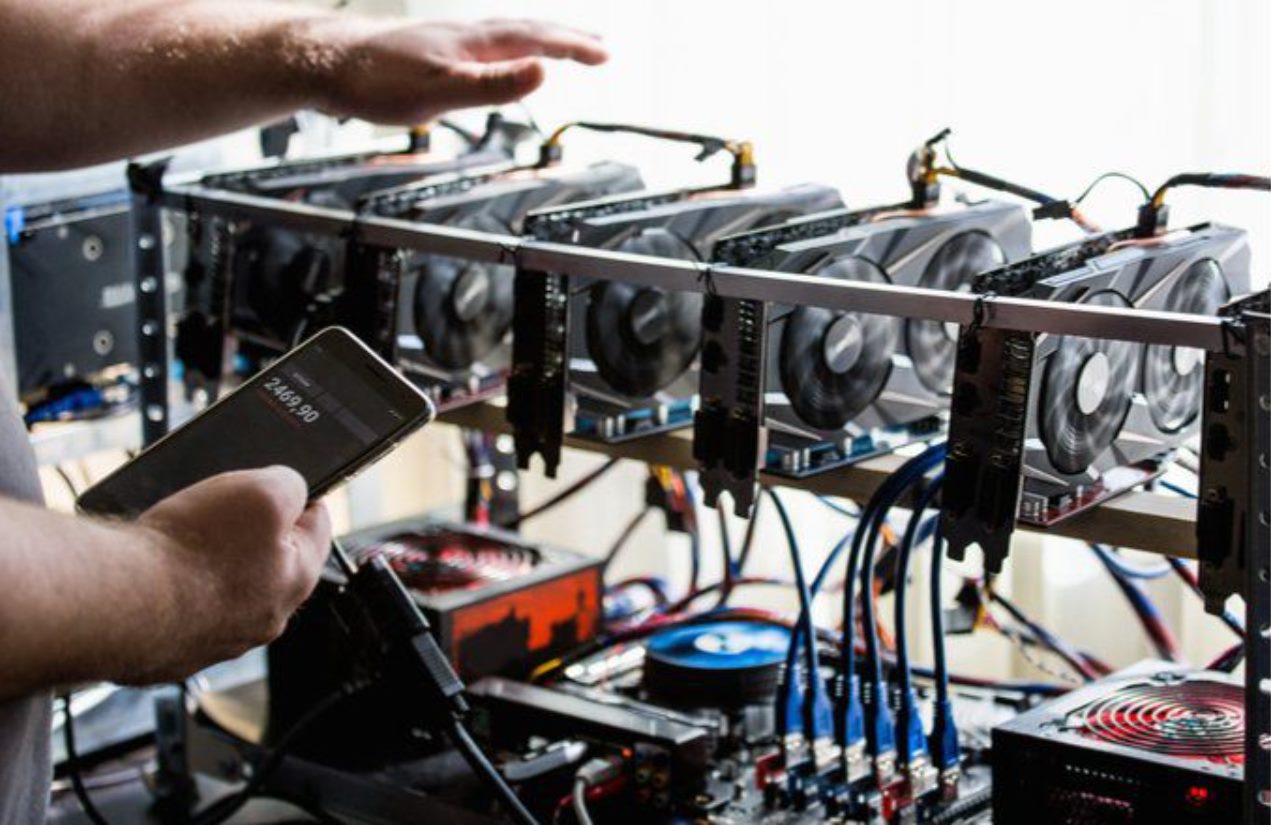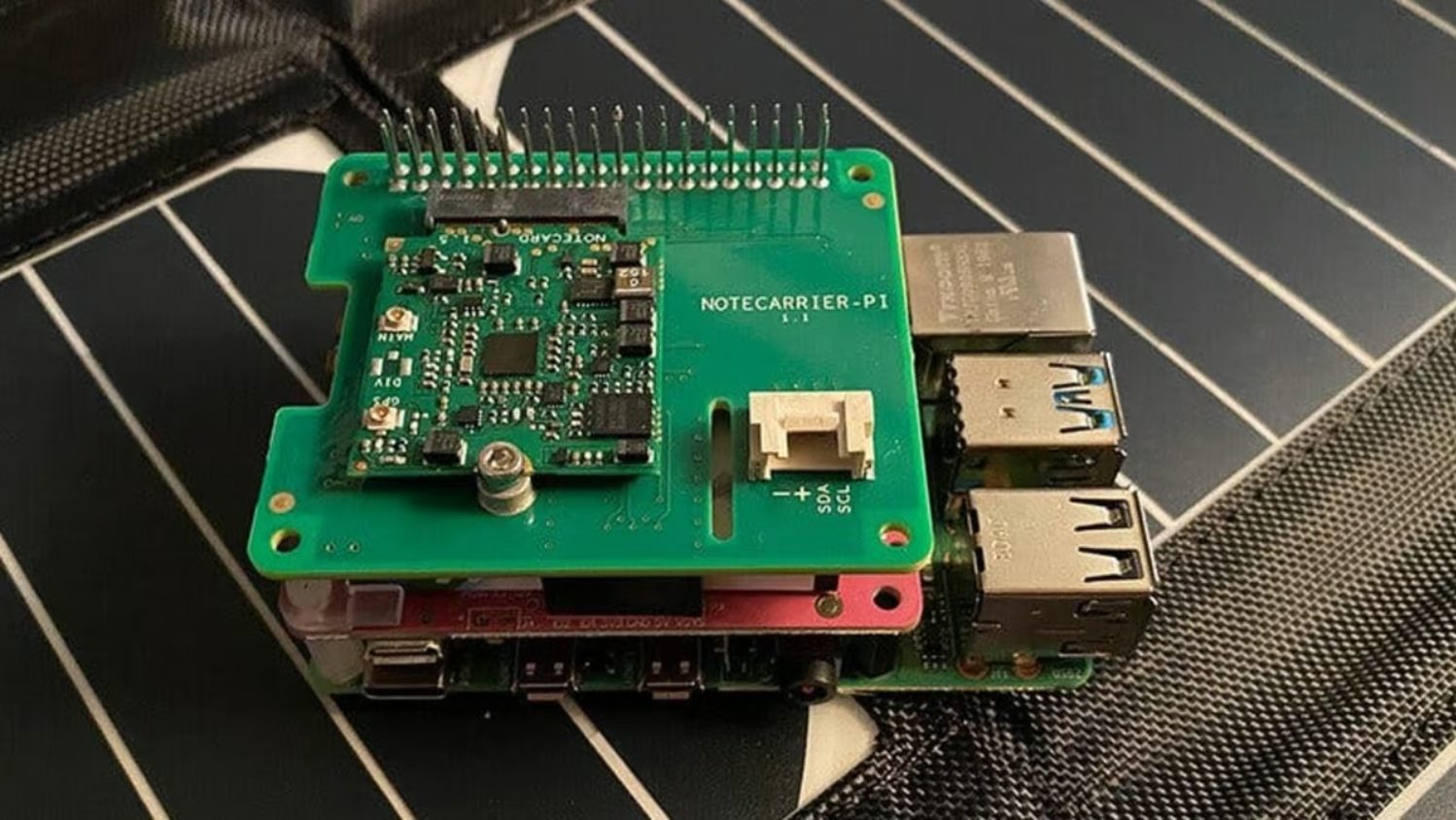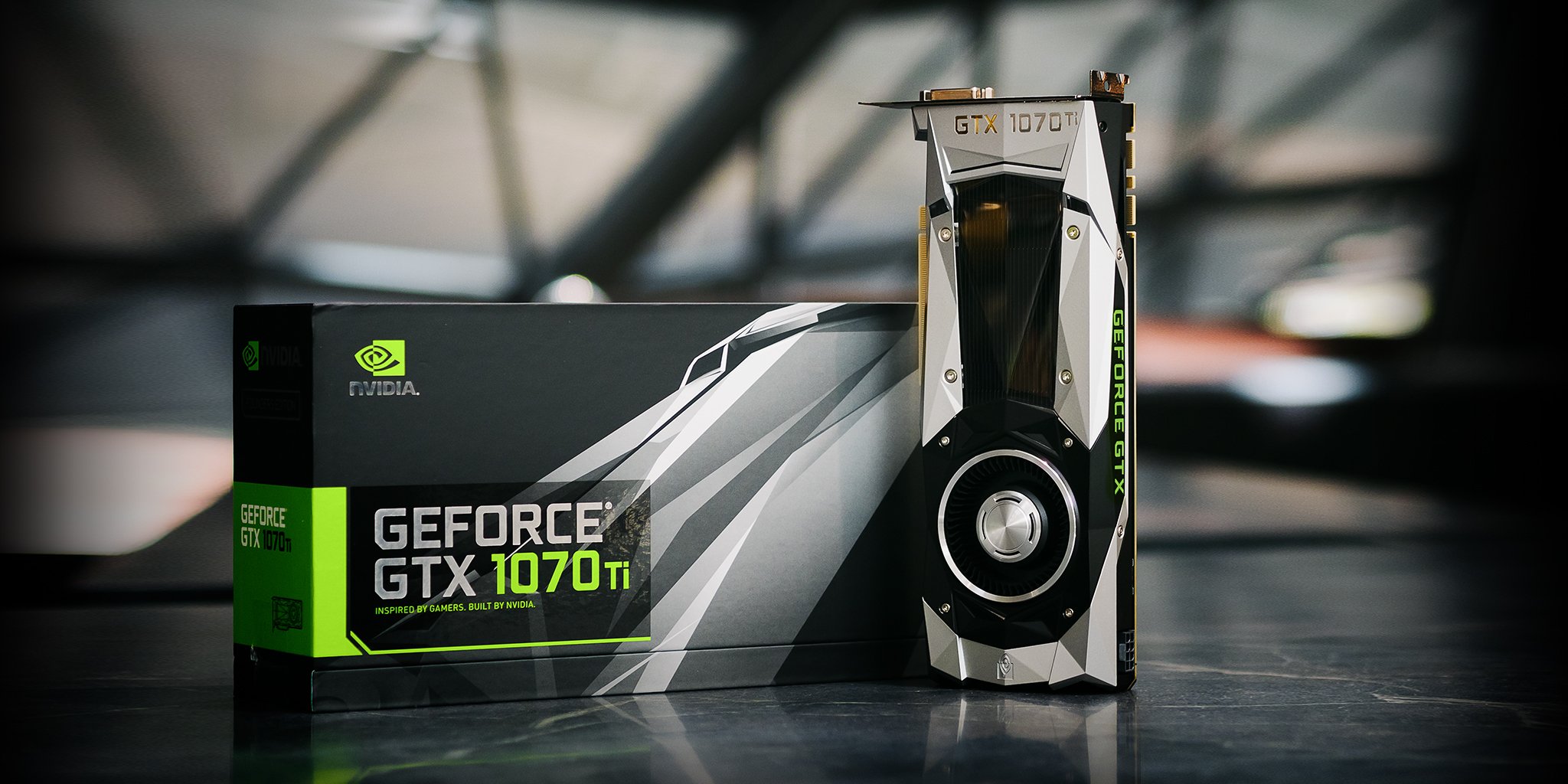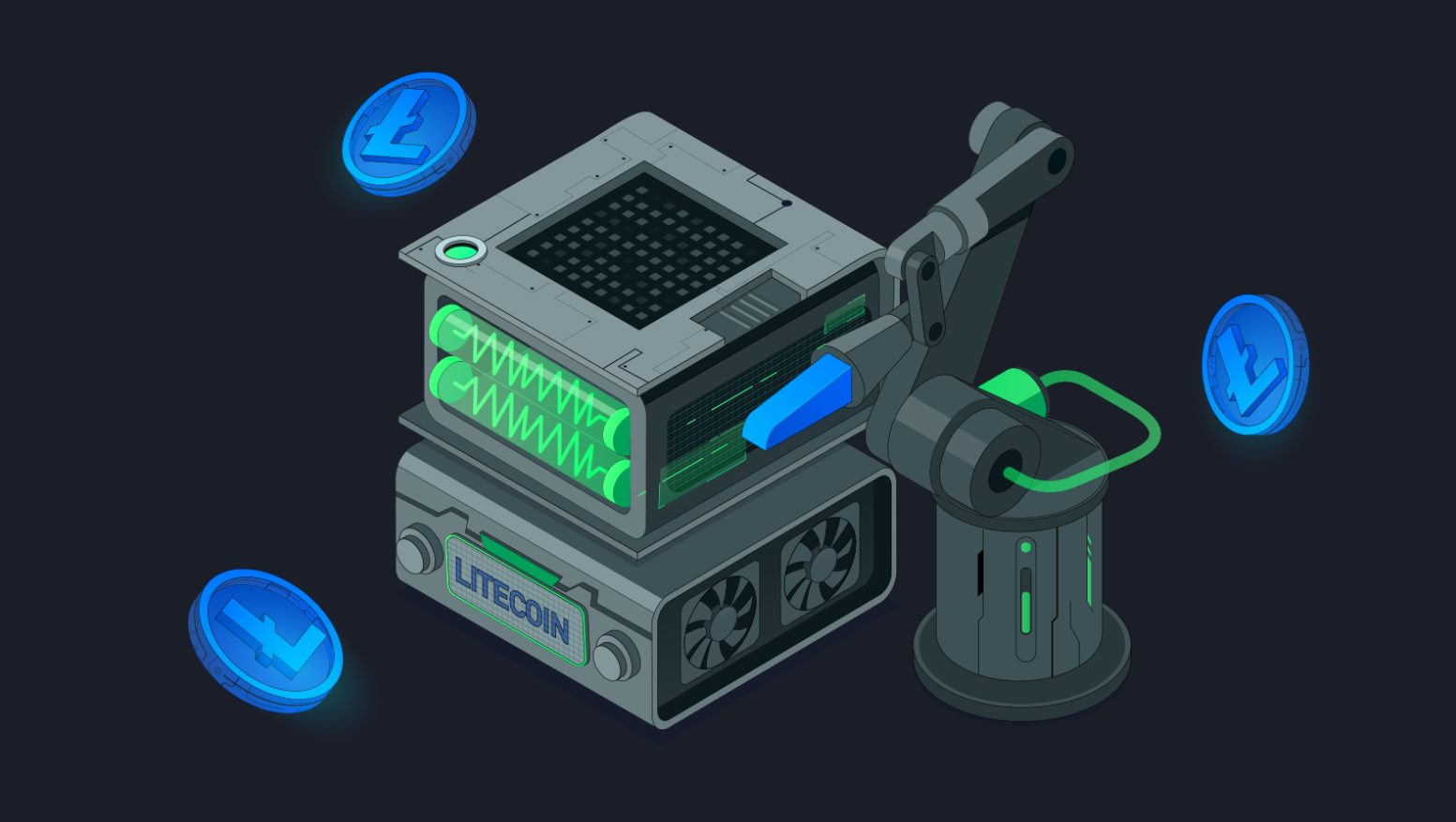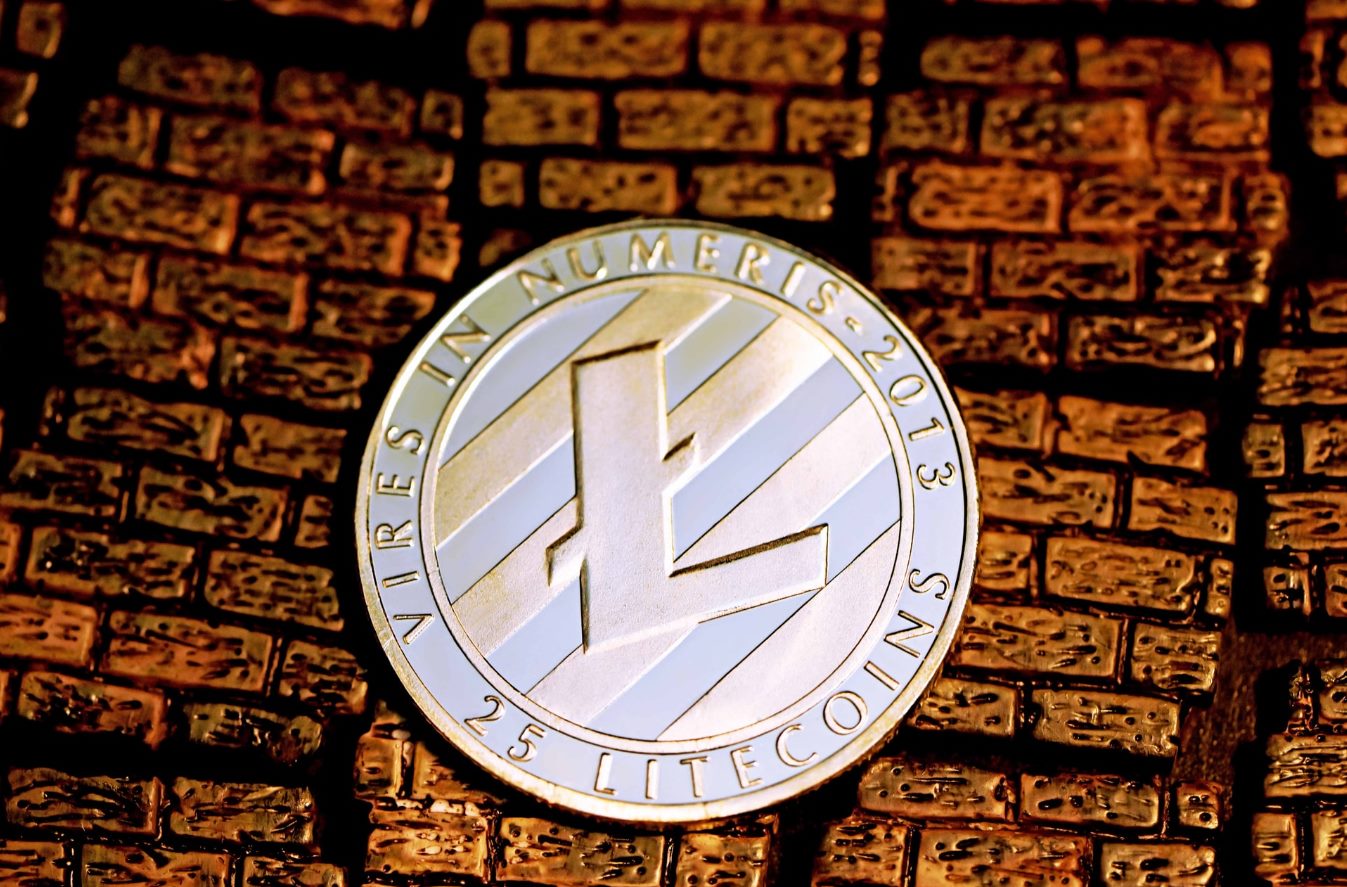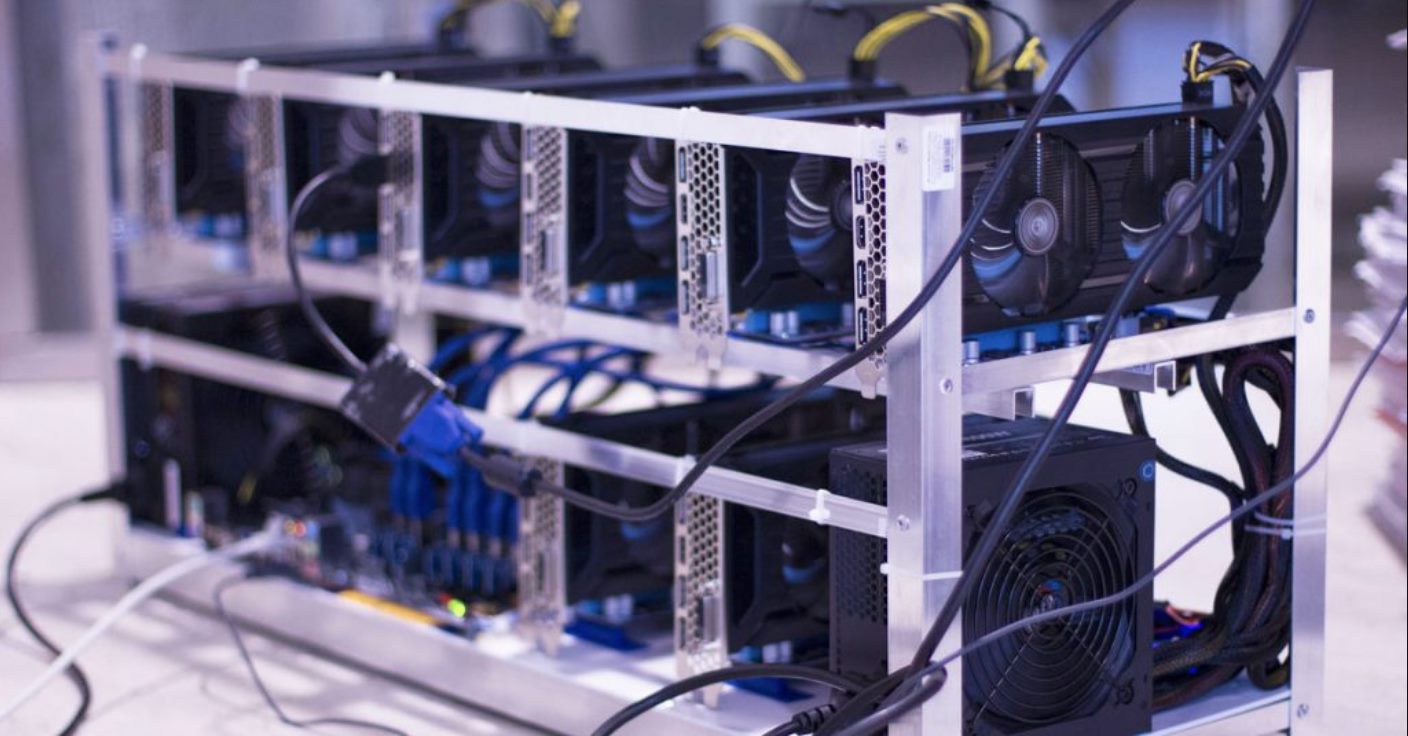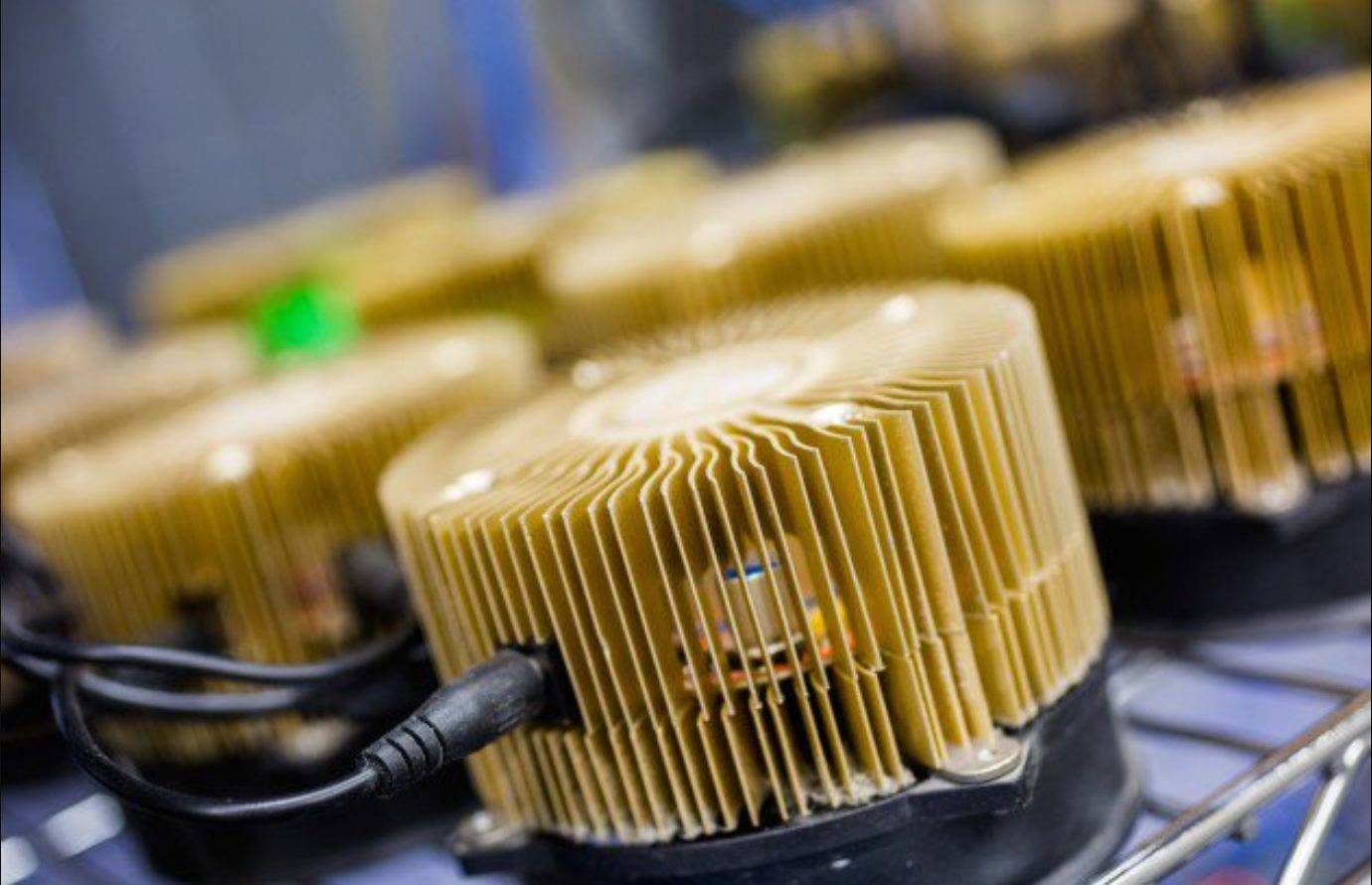Introduction
Welcome to the world of cryptocurrency mining! If you’re interested in mining Litecoin with your GPU, you’ll need a powerful and efficient software to get the job done. One popular option is CGMiner, a versatile mining application that supports a variety of GPUs and cryptocurrencies.
In this guide, we will walk you through the process of using CGMiner with your GPU to mine Litecoin. We’ll cover everything from installation to configuration, helping you optimize your mining setup for maximum efficiency and profitability.
Before we dive into the details, let’s start with a brief overview of what CGMiner is and why it is a preferred choice for many miners.
CGMiner is an open-source mining software developed for ASICs (Application-Specific Integrated Circuits) and GPUs. It is compatible with multiple operating systems, including Windows, Linux, and macOS. Originally designed for Bitcoin mining, CGMiner has since become a popular choice for mining other cryptocurrencies, including Litecoin.
What sets CGMiner apart from other mining software is its flexibility and extensive features. It supports various mining algorithms, making it compatible with a wide range of cryptocurrencies. Additionally, CGMiner allows for advanced customization and provides real-time monitoring of mining operations. Its ability to control GPU fan speed and clock speeds further enhances the efficiency and stability of the mining process.
Now that we have a basic understanding of CGMiner, let’s proceed to the next section, where we will learn how to install CGMiner on your system.
What is CGMiner?
CGMiner is a powerful and widely used open-source mining software that is designed for ASICs and GPUs. It was initially developed for Bitcoin mining but has evolved to support various other cryptocurrencies, including Litecoin. CGMiner is known for its versatility, customizable features, and real-time monitoring capabilities.
One of the key advantages of CGMiner is its compatibility with different operating systems, including Windows, Linux, and macOS. This makes it accessible to a wide range of users with varying preferences and system configurations.
CGMiner supports multiple mining algorithms, allowing miners to choose the most suitable algorithm for the cryptocurrency they wish to mine. This flexibility enables users to mine not only popular cryptocurrencies like Bitcoin and Litecoin but also less mainstream coins that utilize different algorithms.
Another notable feature of CGMiner is its ability to optimize GPU performance. By adjusting GPU fan speed and clock speeds, CGMiner ensures that the mining process operates efficiently while maintaining the stability of the system. This level of control over GPU settings is particularly beneficial for users who want to maximize their mining profitability.
CGMiner provides real-time monitoring of mining operations, giving users instant access to crucial information such as hash rate, temperature, and fan speed. This allows miners to stay updated on the performance of their mining rigs and make any necessary adjustments in real-time.
In addition to its powerful features, CGMiner offers advanced customization options. Users can fine-tune various parameters, such as mining intensity and thread concurrency, to optimize their mining setup for their specific hardware and mining preferences. This level of customization ensures that miners can extract the maximum potential from their GPUs.
Overall, CGMiner is a reliable and efficient mining software that has stood the test of time. Its versatility, customizable features, and real-time monitoring capabilities make it a preferred choice for many miners. In the next section, we will guide you through the process of installing CGMiner on your system.
Installing CGMiner
Installing CGMiner is a straightforward process that can be accomplished in a few simple steps. Here, we will guide you through the installation process on Windows, Linux, and macOS systems.
Windows:
To install CGMiner on Windows, follow these steps:
- Go to the CGMiner GitHub repository (https://github.com/ckolivas/cgminer) and download the latest release for Windows.
- Extract the downloaded ZIP file to a location of your choice.
- Open the extracted folder and locate the “cgminer.exe” file.
- Double-click on “cgminer.exe” to launch the application.
Linux:
If you’re using a Linux-based operating system, follow these steps to install CGMiner:
- Open the terminal on your Linux system.
- Use the package manager of your distribution (e.g., apt-get, yum) to install the necessary dependencies, such as OpenCL and libcurl.
- Once the dependencies are installed, download the CGMiner source code from the GitHub repository.
- Extract the downloaded source code to a directory of your choice.
- Open the terminal and navigate to the extracted directory.
- Run the following commands to compile and install CGMiner:
./configure
make
sudo make install
macOS:
If you’re using a macOS system, follow these steps to install CGMiner:
- Go to the CGMiner GitHub repository and download the latest release for macOS.
- Extract the downloaded ZIP file to a location of your choice.
- Open Terminal and navigate to the extracted folder.
- Run the following command to compile CGMiner:
./configure
make
Once the installation process is complete, you can proceed to the next section to learn how to set up CGMiner with your GPU to mine Litecoin.
Setting Up CGMiner with GPU Litecoin
Now that you have successfully installed CGMiner, it’s time to configure it to start mining Litecoin with your GPU. Follow the steps below to set up CGMiner with your GPU:
- Locate the CGMiner configuration file. On Windows, it is typically named “cgminer.conf” and can be found in the directory where CGMiner is installed. On Linux, the configuration file is often stored in “/etc/cgminer.conf”.
- Open the configuration file using a text editor of your choice.
- Add the necessary settings to configure CGMiner for mining Litecoin with your GPU. These settings typically include your mining pool’s URL, username, password, and the GPU-specific configurations like intensity and thread concurrency.
- Save the configuration file.
- Launch CGMiner using the appropriate command based on your operating system.
Once CGMiner is running, it will connect to the mining pool specified in the configuration file and start mining Litecoin with your GPU. You can monitor the mining progress and performance in the CGMiner console or through the web-based interface provided by your mining pool.
It’s important to note that mining with a GPU requires the use of OpenCL drivers. Make sure you have the latest drivers installed for your GPU to ensure optimal performance.
If you encounter any issues during the setup process, refer to the troubleshooting section of this guide or consult the CGMiner documentation and community forums for assistance.
With CGMiner successfully set up and running with your GPU, you can now proceed to the next section to learn how to configure CGMiner for optimal mining performance.
Configuring CGMiner
Configuring CGMiner is a crucial step to ensure optimal mining performance and efficiency. By fine-tuning the settings, you can maximize the hash rate of your GPU and increase your chances of earning more Litecoin. Follow the steps below to configure CGMiner:
- Open the CGMiner configuration file using a text editor.
- Locate the sections specific to your GPU, as each GPU model may require different settings.
- Adjust the GPU-specific settings such as intensity, thread concurrency, and worksize. These settings determine how much processing power is allocated to mining and can significantly impact the overall performance. However, finding the optimal values may require some trial and error, as it depends on the capabilities of your specific GPU.
- Ensure that you have entered the correct URL, username, and password for your mining pool. This information is crucial for CGMiner to connect to the pool and start mining.
- Consider enabling any additional features or optimizations provided by CGMiner, such as automatic fan control or voltage control. These options can help maintain the stability of your GPU while maximizing mining performance.
- Save the configuration file and restart CGMiner for the changes to take effect.
It’s important to note that tweaking the settings too aggressively can potentially cause instability or damage to your GPU. Therefore, it is recommended to make small adjustments and observe the performance before making further changes.
Additionally, keep an eye on the temperature of your GPU while mining. High temperatures can negatively impact performance and longevity. Consider installing monitoring software to keep track of the GPU temperature and adjust the fan speed accordingly.
Once you have configured CGMiner according to your GPU’s specifications and your desired mining preferences, you are ready to start mining Litecoin. Monitor the mining operation closely and make any necessary adjustments to optimize performance over time.
Now that you have successfully configured CGMiner, you can proceed to the next section to learn how to find the right mining pool for Litecoin.
Finding the Right Pool
Choosing the right mining pool is crucial for successful Litecoin mining. A mining pool is a group of miners who collaborate and share their resources to increase their chances of mining blocks and earning rewards. When selecting a pool, consider the following factors:
- Pool Reputation: Look for a pool with a good reputation in the mining community. Reading reviews and feedback from other miners can help you determine the reliability and trustworthiness of a pool.
- Pool Size: Larger pools generally have a higher probability of finding blocks more frequently, resulting in more consistent payouts. However, larger pools may also have higher competition and lower individual rewards.
- Fee Structure: Pay attention to the pool’s fee structure. Most pools charge a small percentage of the mined rewards as a fee. Ensure that the fee is reasonable and competitive compared to other pools.
- Payment Methods: Different pools offer various payment methods, such as PPS (Pay Per Share), PPLNS (Pay Per Last N Shares), or PROP (Proportional). Each method has its own advantages and disadvantages, so choose the one that aligns with your mining goals.
- Server Locations: Consider the geographical location of the pool’s servers. Pools with servers located closer to your mining rig can potentially reduce latency and improve mining efficiency.
- Pool Reliability and Uptime: Look for pools that have a high uptime percentage, as frequent downtime can disrupt your mining operations and reduce your potential earnings.
- Community and Support: A pool with an active community and solid support channels can be valuable. Having access to forums, chatrooms, and helpful documentation can assist you in troubleshooting issues and staying up to date with the latest developments.
Take the time to research and compare different mining pools based on these factors. It may also be worth trying out a few different pools to see which one suits your mining requirements and preferences the best.
Once you have selected a mining pool, update the pool’s URL, username, and password in the CGMiner configuration file. This will ensure that CGMiner connects to the pool correctly and begins mining for Litecoin.
In the next section, we will discuss how to monitor CGMiner and address any troubleshooting issues that may arise during the mining process.
Monitoring CGMiner
Monitoring your CGMiner is essential to ensure smooth operation, optimize performance, and address any potential issues that may arise during the mining process. Here are some key aspects to consider when monitoring CGMiner:
- Real-time Monitoring: CGMiner provides real-time statistics on various parameters, such as hash rate, temperature, fan speed, and accepted/rejected shares. Monitor these values regularly to ensure that your mining rig is operating at optimal levels.
- Temperature Management: Keep an eye on the temperature of your GPU(s) to prevent overheating. High temperatures can lead to performance degradation and even hardware damage. Consider using monitoring software or CGMiner’s built-in temperature control features to manage temperature effectively.
- Mining Efficiency: Check the efficiency of your mining operation by monitoring the hash rate and the number of accepted versus rejected shares. Lower hash rates or a high number of rejected shares could indicate issues with your mining setup or hardware.
- Network Connection: Ensure that your mining rig has a stable and reliable network connection to the mining pool. Network interruptions or high latency can affect mining performance and result in lower earnings.
- Power Consumption: Monitor the power consumption of your mining rig. Knowing the power usage can help you estimate electricity costs and make necessary adjustments to maximize profitability.
- Logging and Alerts: Enable logging and alerts in CGMiner to receive notifications of any critical events or errors. This can help you identify issues promptly and take appropriate action.
- Stay Informed: Stay up to date with the latest CGMiner releases, bug fixes, and improvements. Subscribing to CGMiner’s official channels, forums, or following relevant communities can provide valuable insights and help you stay ahead of any potential issues.
Regularly monitoring CGMiner allows you to maintain the optimal performance of your mining rig and address any potential issues promptly. By staying proactive and vigilant, you can maximize your mining efficiency and profitability.
In the next section, we will discuss common troubleshooting techniques to overcome any challenges you may encounter while using CGMiner for mining Litecoin.
Troubleshooting CGMiner Issues
While CGMiner is a reliable mining software, you may encounter occasional issues during the mining process. Here are some common CGMiner issues and troubleshooting tips:
- Connection Problems: If CGMiner is unable to connect to the mining pool, check your internet connection and ensure that the pool’s URL, username, and password are correctly entered in the configuration file.
- Incorrect GPU Settings: If you experience crashes or instability, review the GPU-specific settings in the configuration file. Experiment with adjusting the intensity, thread concurrency, or worksize values to find the optimal settings for your GPU.
- Driver Issues: Outdated or incompatible GPU drivers can cause problems. Make sure you have the latest GPU drivers installed and consider switching to a different driver version if issues persist.
- Overheating: Overheating can lead to performance issues and system instability. Ensure that your mining rig is adequately cooled with proper ventilation and fan control. Clean out any dust or debris that may be blocking airflow.
- Rejected Shares: If CGMiner is generating a high number of rejected shares, double-check your GPU settings and compare them to the recommended settings for the specific GPU model you are using. Adjusting the thread concurrency or intensity may help improve share acceptance rates.
- Software Conflicts: Conflicts with other mining software or background applications can interfere with CGMiner’s performance. Close any unnecessary programs or processes that may be using system resources and causing conflicts.
- Insufficient Power Supply: If your mining rig suddenly shuts down or restarts, it may indicate an insufficient power supply. Make sure your power supply unit (PSU) is capable of supplying enough power to your GPUs and other components.
- CGMiner Crashes: If CGMiner crashes frequently, ensure that your system meets the required specifications for mining and that your GPU is not overclocked too aggressively. Lowering the GPU clock speeds or intensity settings might help stabilize CGMiner.
If you continue to experience issues with CGMiner, consult the CGMiner documentation, official forums, or online communities for specific troubleshooting guidance. It’s also helpful to document any error messages or symptoms you encounter, as this information can assist in finding solutions.
Remember that mining can be a complex process, and it may require some trial and error to find the optimal settings and resolve any issues. Patience and persistence are key to troubleshooting CGMiner effectively.
Now that you are equipped to troubleshoot potential CGMiner issues, you are ready to embark on your journey of mining Litecoin with confidence!
Conclusion
Congratulations! You have now learned how to use CGMiner with your GPU to mine Litecoin. We covered the installation process, setting up CGMiner, configuring it for optimal performance, finding the right mining pool, monitoring CGMiner, and troubleshooting common issues.
By utilizing CGMiner’s flexibility and extensive features, you have the ability to mine not only Litecoin but also various other cryptocurrencies. Remember to stay up to date with the latest updates and developments in the world of cryptocurrency mining to further enhance your mining experience.
While mining can be a profitable venture, it is essential to consider factors such as electricity costs, equipment maintenance, and market volatility. Make sure to perform cost and profitability analyses before diving into mining.
Be mindful of the risks associated with mining, including potential hardware failures, environmental impact, and regulatory changes. It’s crucial to stay informed and adapt to the evolving landscape of cryptocurrency mining.
Continue learning and exploring new strategies to optimize your mining setup and adapt to changing market conditions. By staying engaged with the mining community and utilizing resources such as forums and tutorials, you can further refine your mining expertise.
Remember that mining is not just about making a profit but also being part of a decentralized network that supports the wider cryptocurrency ecosystem. Your participation in mining contributes to the security and integrity of blockchain networks.
We hope this guide has provided you with the knowledge and tools needed to successfully mine Litecoin with CGMiner and your GPU. Happy mining!







